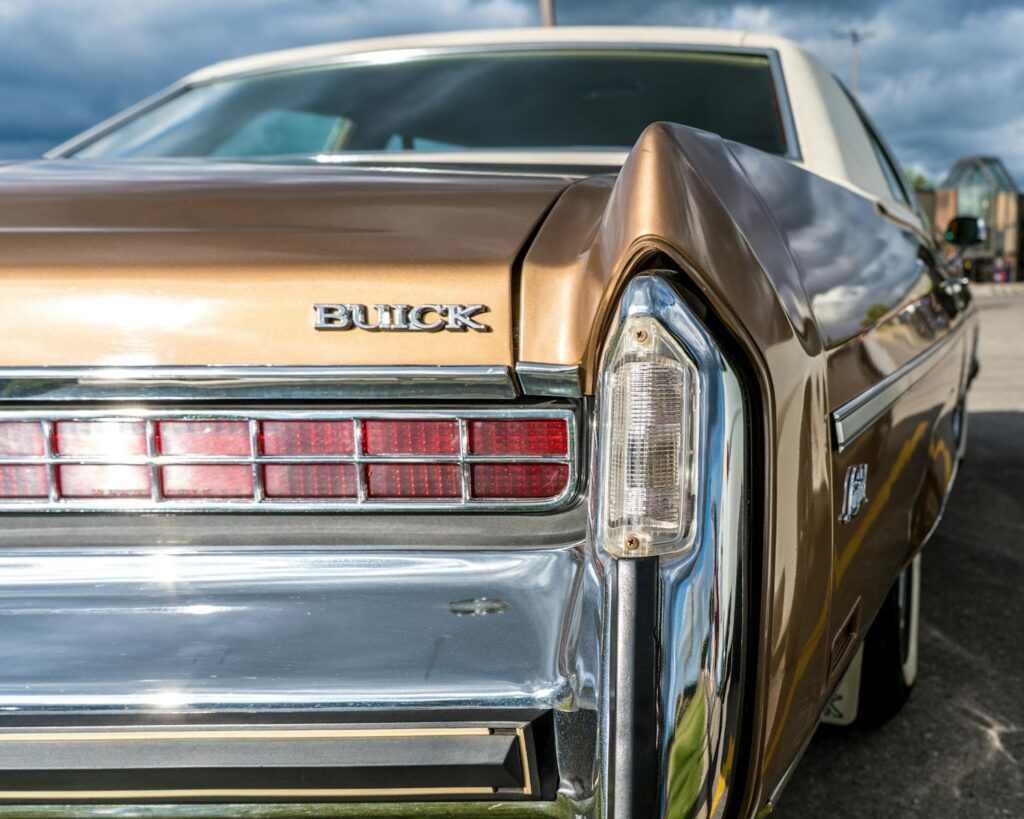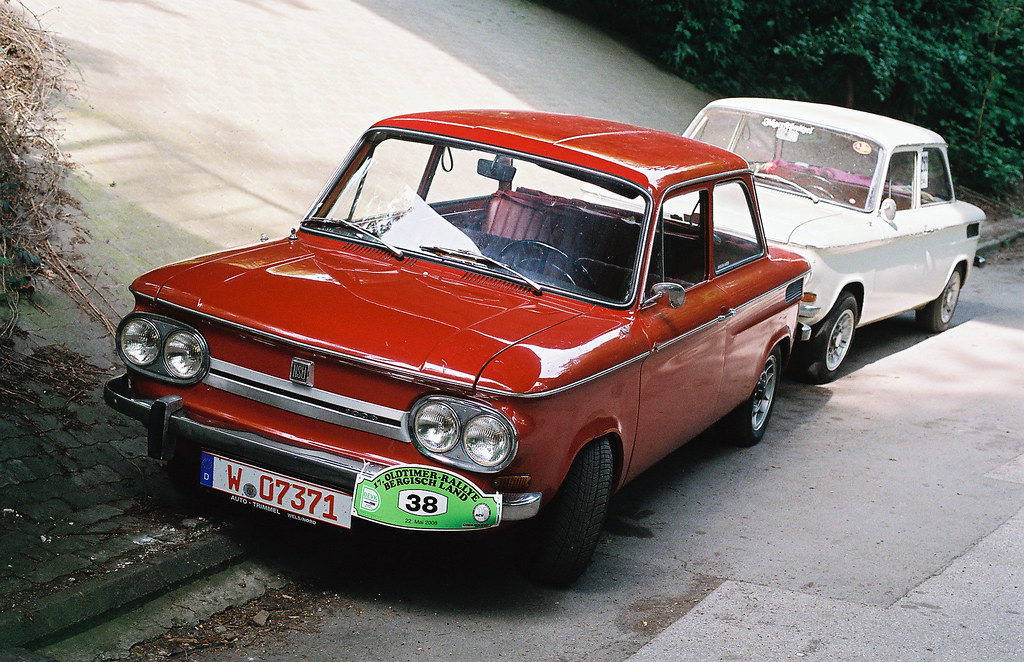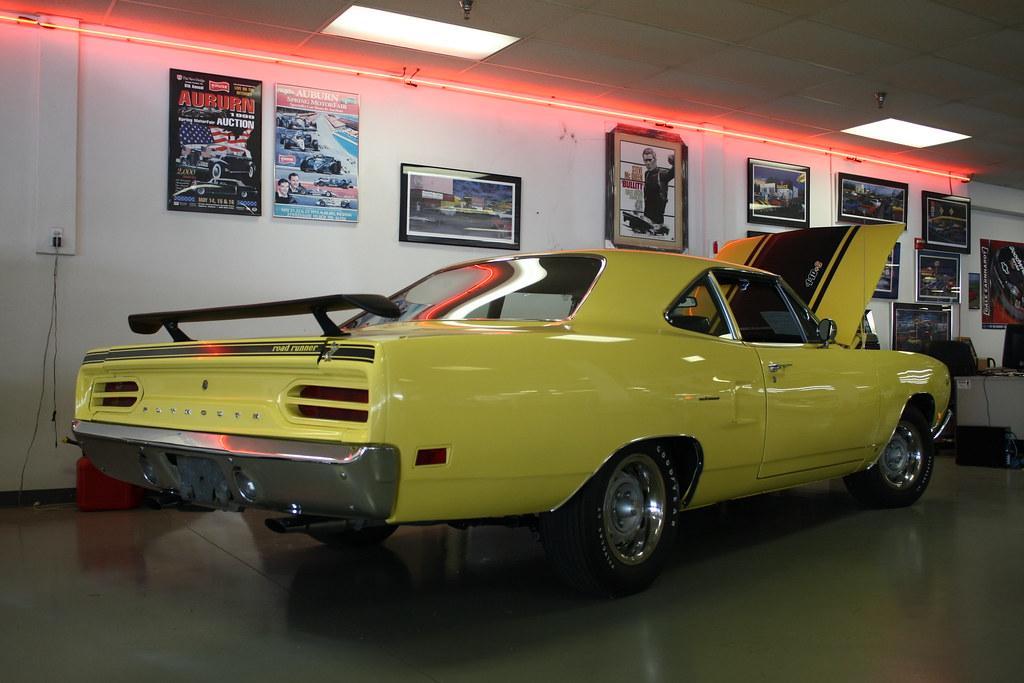
Alright, car enthusiasts and casual drivers alike, gather ’round! There’s something truly special about American cars, isn’t there? We’ve all got those hazy, golden-tinted memories of classic rides, the roaring V8s, and those catchy pro-America TV commercials from back when we were kids. “Baseball, Hotdog’s, ApplePie and Chevrolet” – remember that one? God, I miss the ’70s! There’s a certain undeniable cool factor, a muscle, a swagger that’s uniquely American.
But let’s be real for a moment. While the idea of owning one of these iconic machines might feel like living the American dream, the reality for many drivers often turned into a full-blown nightmare. It’s a cultural Americanism we seem to have become surprisingly comfortable with: the quiet acceptance that some of our beloved traditional U.S. brands come with an unspoken expectation that not all models will be up to par. In fact, some makes and models have fared so poorly, you might just find yourself on a first-name basis with your dealership service manager.
So, buckle up, because we’re about to take a wild ride through automotive history (and a little bit of the present) to highlight some American cars that, bless their hearts, were just not built to last, or even function properly! We’re talking about the vehicles that promised glory but delivered… well, a lot of trips to the mechanic. Get ready for some seriously cringe-worthy (and surprisingly common) tales of mechanical mayhem, design disasters, and why some dreams should probably just stay dreams.
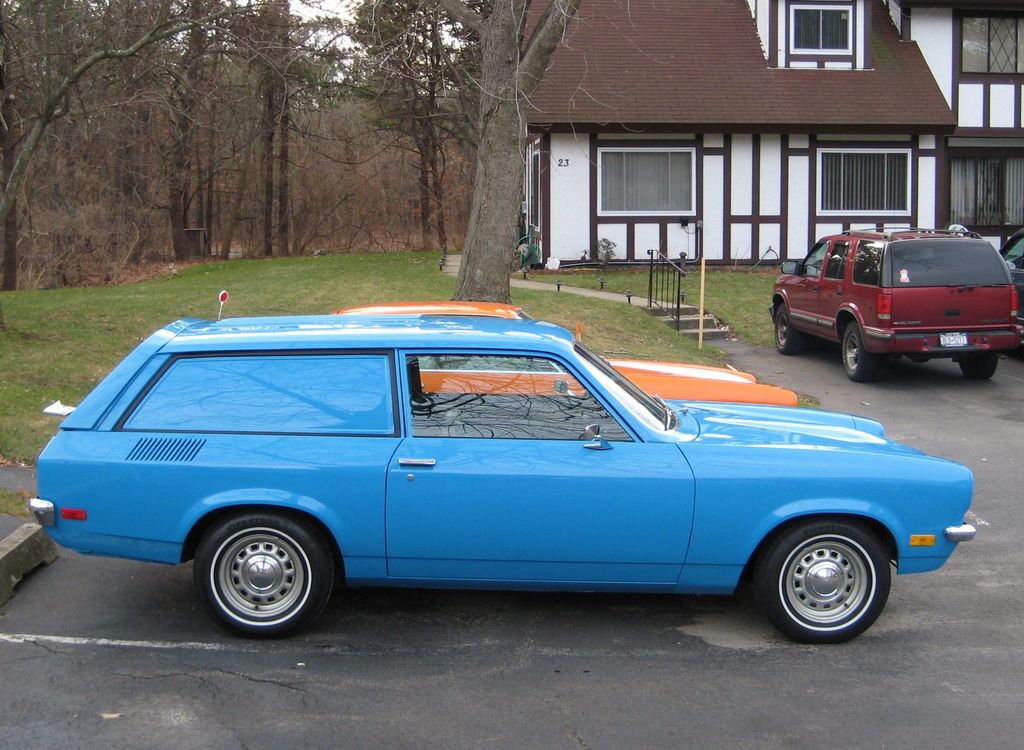
1. **Chevrolet Vega (1971-1977)** If there was an Automotive Hall of Shame, the Chevrolet Vega would not just have a spot; it would have its own dedicated pavilion, complete with interactive exhibits on rust and engine failure simulations. This car wasn’t just prone to corrosion; its body panels seemed to develop oxidation faster than a time-lapse video of decaying fruit. Imagine buying a new car and witnessing significant rust damage within just two years of ownership – it sounds like a bad joke, but for Vega owners, it was a harsh reality.
Front fenders and body panels surrendered to the elements so rapidly that the term “Vega rust” entered the automotive lexicon, becoming shorthand for premature deterioration that defied all logic and warranty coverage. Observing these cars literally dissolve in real time wasn’t just tragic; it became a form of morbid entertainment. This widespread and highly visible deterioration damaged General Motors’ reputation far more thoroughly than any competitor’s advertising campaign ever could. It became a public spectacle of quality failure.
But wait, there’s more! The problems weren’t just skin deep. The Vega’s aluminum engine block, notoriously lacking proper cylinder liners, created a perfect storm for overheating and excessive oil consumption. Routine maintenance often felt more like emergency room triage, just trying to keep the thing running. Mechanical reliability failed across multiple systems with such predictable regularity that Vega owners reportedly formed their own support networks, probably just to cope with the collective automotive trauma.
Engine problems became so incredibly commonplace that parts stores supposedly stocked Vega components like emergency medical supplies, knowing they’d be in constant demand. The car’s numerous quality failures served as a sobering, undeniable reminder that innovative materials mean absolutely nothing without proper engineering execution. While automotive folklore might exaggerate some of the failure stories, the core reliability issues were so thoroughly documented that they fundamentally altered American consumers’ perceptions about domestic versus imported manufacturing standards. It was a wake-up call, but a painful one.
Car Model Information: 1976 Chevrolet Vega
Name: Chevrolet Vega
Caption: 1971 Chevrolet Vega
Aka: Vega 2300
Manufacturer: Chevrolet
Production: 1970–1977
ModelYears: 1971–1977
Assembly: Lordstown, Ohio
Predecessor: Chevrolet Corvair
Successor: Chevrolet Monza
Class: Subcompact car
BodyStyle: notchback,hatchback,station wagon,Panel van
Layout: FR layout
Platform: GM H platform (RWD)
Engine: {{cvt,2.3,L,cuin,0,Chevrolet 2300 engine
Transmission: manual transmission,4-speed manual,overdrive (mechanics),Torque-Drive 2-speed Powerglide requiring manual shifting,Powerglide,Turbo-Hydramatic
Wheelbase: cvt
Length: cvt
Width: cvt
Height: cvt
Weight: cvt
Related: Pontiac Astre,Chevrolet Monza,Pontiac Sunbird#First generation (1976–1980),Buick Skyhawk#First generation (1975–1980),Oldsmobile Starfire#Second generation (1975–1980)
Designer: Bill Mitchell (designer)
Categories: 1970s cars, All articles needing additional references, All articles with unsourced statements, Articles needing additional references from July 2023, Articles with short description
Summary: The Chevrolet Vega is a subcompact automobile manufactured and marketed by GM’s Chevrolet division from 1970 until 1977. Available in two-door hatchback, notchback, wagon, and sedan delivery body styles, all models were powered by an inline four-cylinder engine designed specifically for the Vega, with a lightweight aluminum alloy cylinder block. The Vega first went on sale in Chevrolet dealerships on September 10, 1970. Variants included the Cosworth Vega, a short-lived limited-production performance version introduced spring 1975.
The Vega received the 1971 Motor Trend Car of the Year. Subsequently, the car became widely known for a range of problems related to its engineering, reliability, safety, propensity to rust, and engine durability. Despite numerous recalls and design upgrades, Vega’s problems tarnished its reputation and that of General Motors. Production ended with the 1977 model year.
The car was named for Vega, the brightest star in the constellation Lyra.
Get more information about: Chevrolet Vega
Buying a high-performing used car >>>
Brand: Chevrolet Model: Vega
Price: $34,000 Mileage: 82,344 mi.
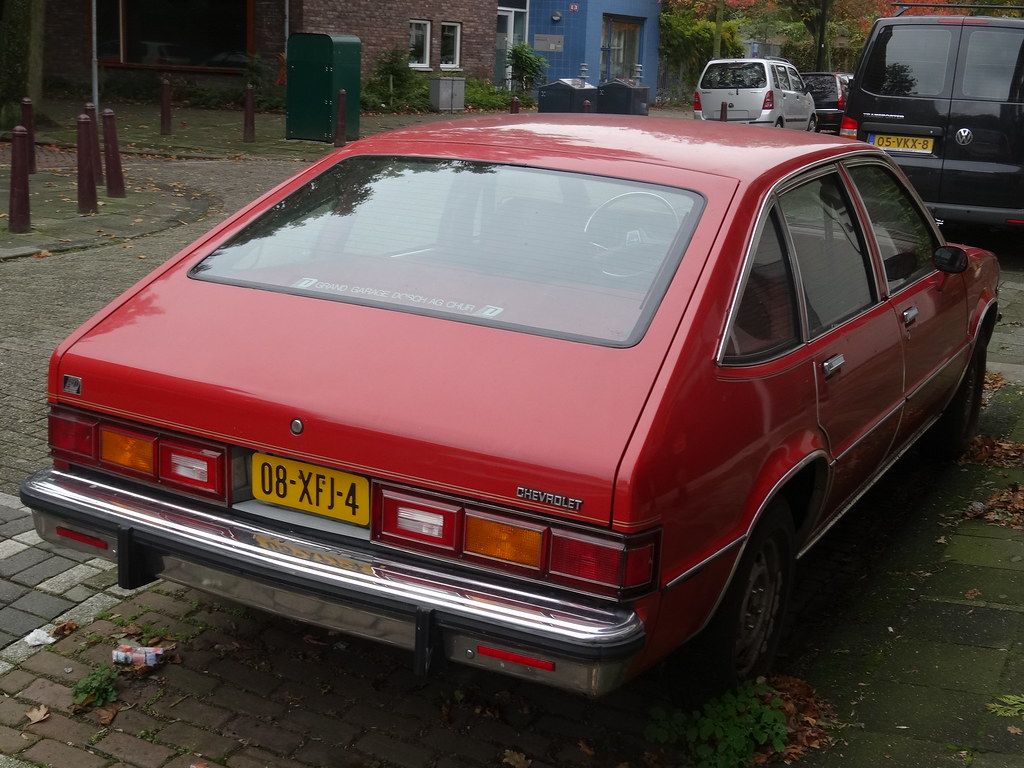
2. **Chevrolet Citation (1980-1985)** The Chevrolet Citation, GM’s first front-wheel drive compact, burst onto the scene with tremendous fanfare and initially impressive sales figures, hitting 800,000 units right out of the gate. Its clean, efficient lines seemed to whisper that American automakers had finally cracked the code, finally decoding the import success formula. The Citation looked competent enough, convincing a significant number of buyers that Detroit had learned its lessons about modern automotive design and was ready to compete.
However, those impressive sales figures, as it turned out, masked a ticking time bomb of quality issues that would soon detonate spectacularly across showrooms nationwide. Within just a few short years, sales plummeted from that initial 800,000 all the way down to a mere 200,000 units. Why the dramatic drop? Well, word spread like wildfire through small towns, faster than any gossip, about the Citation’s numerous mechanical shortcomings and persistent reliability failures. It was a PR nightmare in motion.
Under the hood, both the four and six-cylinder engines delivered performance so utterly uninspiring they made watching paint dry seem like a thrilling adventure. But the real headaches emerged with its reputation for significant braking and steering problems, which transformed routine commuting into what felt like an extreme sport. The Citation earned the unenviable distinction of becoming one of the most recalled vehicles of its era – definitely not a title any manufacturer wants on their resume, let alone proudly displays.
Quality concerns only multiplied as these cars aged, doing so about as gracefully as milk left out in the summer heat. Owners frequently reported issues like unpredictable rear brake lockup and handling problems that made every single trip feel like an audition for a demolition derby. General Motors quickly discovered that impressive launch numbers, no matter how high, mean absolutely nothing if your product can’t maintain consumer confidence beyond the initial honeymoon period. It was a hard lesson learned, but at a huge cost to GM’s credibility.
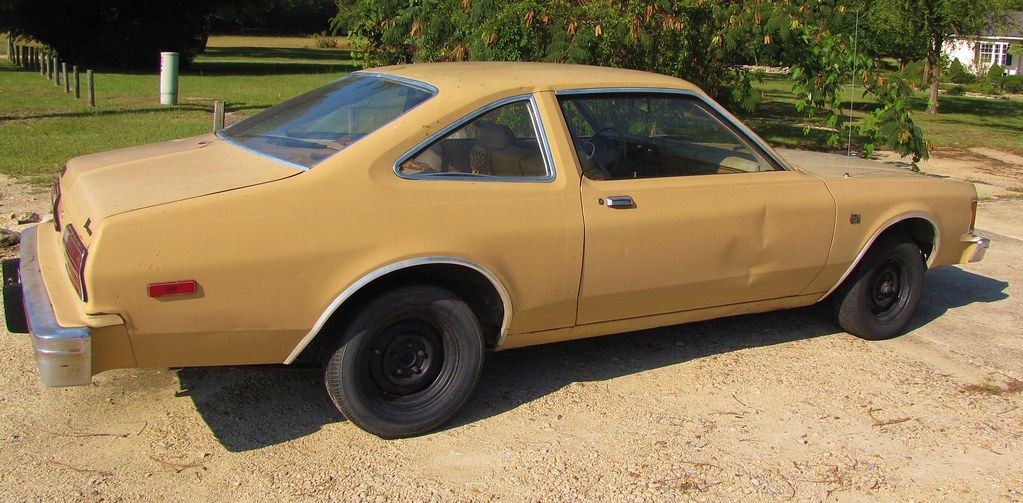
3. **Dodge Aspen and Plymouth Volare (1976-1980)** Chrysler’s compact twins, the Dodge Aspen and Plymouth Volare, arrived with a grand promise: American engineering efficiency combined with import-beating reliability. What they actually delivered, though, was a masterclass in destroying brand credibility, and they did it faster than you could say “rust-through warranty.” These vehicles had an uncanny ability to begin their oxidation process before the temporary tags even expired, a direct result of Chrysler saving pennies by omitting inner fender shields, which ultimately cost them millions in irreparable reputation damage.
Owners found themselves in the surreal position of witnessing their brand-new Aspen or Volare disintegrate in real-time, right before their eyes. This unfortunate phenomenon became a bizarre form of neighborhood entertainment in the late 1970s, as vehicle bodies surrendered to corrosion with the enthusiasm of iron filings meeting magnets. This aggressive, premature rust didn’t just affect the cars’ resale values; it cemented itself into automotive folklore, serving as a cautionary tale that warned entire generations about the perils of cutting corners on fundamental engineering.
And if the rust wasn’t enough, the interior and mechanical reliability of these cars were a whole other saga. Eight recalls in their first two years on the market tells you everything you need to know about their consistent reliability issues. These cars seemed to spend more time in service bays than they did in driveways, leading many owners to develop a unique form of Stockholm syndrome with their repair technicians. Stalling, hesitation, and throttle response issues made the simple act of driving feel like operating a piece of equipment that actively resented functioning properly.
Safety recalls alone affected over 1.3 million vehicles, addressing critical issues like brake line corrosion, seatbelt retractor failures, and hood latch malfunctions that could potentially turn routine maintenance into an unplanned hood surfing experience. Honestly, owning an Aspen or Volare didn’t just mean you had a car; it meant maintaining backup transportation plans and developing an intimate, almost daily relationship with your service advisor’s appointment calendar. It was an ownership experience for the truly brave, or perhaps, the perpetually optimistic.
Car Model Information: 1976 Dodge Aspen RT
Caption: Dodge Aspen coupe
Name: Plymouth Volaré / Dodge Aspen
Manufacturer: Chrysler
Production: 1976–1980
ModelYears: 1976–1980
Class: Compact car
Layout: Front-engine, rear-wheel-drive layout
Platform: Chrysler F platform
Assembly: Mexico City,Mexico
BodyStyle: station wagon,sedan (car),coupe
Engine: {{convert,225,CID,L,1,abbr=on,Chrysler Slant-6 engine
Abbr: on (wagon)
Transmission: manual transmission,TorqueFlite,A998/A999 3-speed TorqueFlite automatic,manual transmission
Predecessor: Plymouth Valiant
Successor: Plymouth Reliant,Dodge 400
Aka: ubl
Wheelbase: {{convert,108.7,in,mm,0,abbr=on
Weight: 3200 lb
Length: {{convert,198.8,in,mm,0,abbr=on
Width: 73.3 in
Height: {{convert,53.3,in,mm,0,abbr=on
Related: Monteverdi Sierra
Categories: All articles needing additional references, All articles with unsourced statements, Articles needing additional references from June 2025, Articles with short description, Articles with unsourced statements from December 2008
Summary: The Dodge Aspen, and its badge engineered variant, the Plymouth Volaré, are compact rear-drive cars manufactured and marketed by Chrysler for model years 1976-1980 in four-door sedan, two-door coupe, and four-door wagon styles.
During the Volaré/Aspen’s production, North American automakers were actively “downsizing” their lineups, reducing size and weight for improved fuel economy — and the industry was reclassifying its size nomenclature. The Volaré/Aspen were thus classified originally as compact cars and as intermediate-sized cars by the time their production ended.
The Volaré/Aspen were discontinued following the 1980 model year prior to the introduction of the front-wheel-drive Plymouth Reliant and Dodge Aries, known collectively as K-cars. The end of production also marked the demise of Dodge Main Assembly, which was closed the same day.
Get more information about: Dodge Aspen
Buying a high-performing used car >>>
Brand: Dodge Model: Aspen
Price: $66,000 Mileage: 32,118 mi.
Read more about: From Plucked Chickens to K-Cars: Revisiting Dodge’s Most Infamous Flops
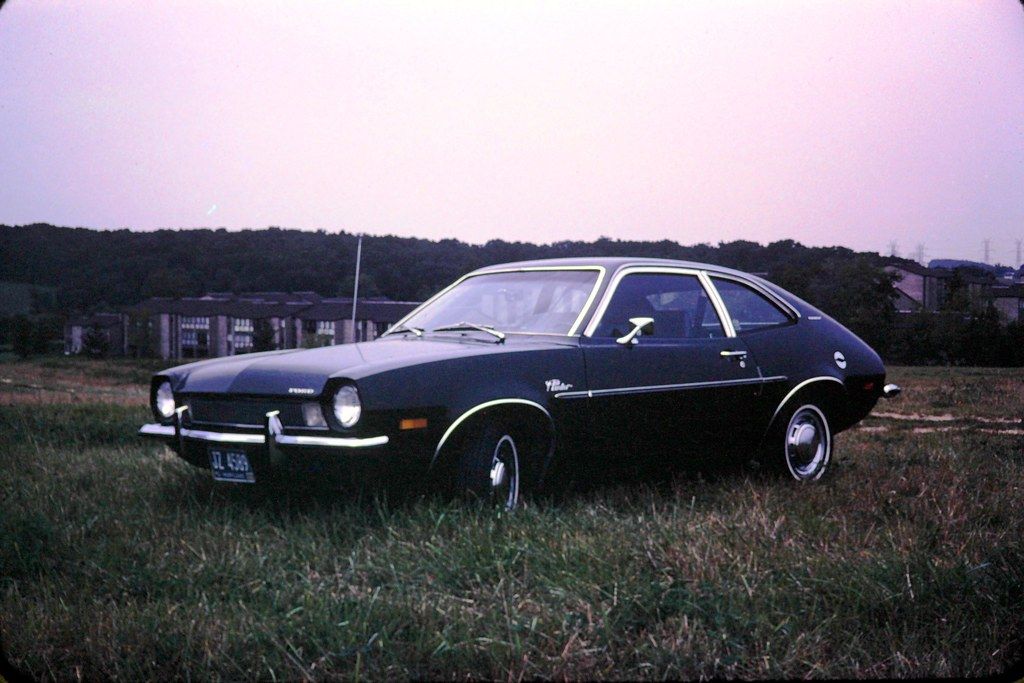
4. **Ford Pinto and Mercury Bobcat (1971-1980)** From the outside, Ford’s Pinto appeared innocent enough, right? It was pitched as a compact economy car, sporting clean lines and a distinctive fastback profile that suggested sensible American transportation, perfect for the fuel-conscious masses of the era. On the surface, the design looked perfectly competent, even somewhat attractive, for what it was supposed to accomplish in the competitive marketplace of the 1970s. It was meant to be Ford’s answer to the rising tide of efficient foreign imports.
But what lurked beneath that seemingly harmless exterior wasn’t just poor design; it was a chilling example of corporate cost-cutting disguised as practical engineering. The fuel tank was positioned like a ticking incendiary device, placed precariously behind the rear axle. This wasn’t simply a design flaw; it was a calculated risk that, in a horrific twist, turned routine fender-benders into potential crematoriums on wheels. It’s hard to imagine a more devastating design oversight.
Inside, the Pinto offered what could only be described as spartan but functional transportation, complete with the typical 1970s build quality and a performance level that frankly disappointed compared to most of its competitors in the compact class. Yet, the true horror story wasn’t unfolding in the cabin with cheap plastics or uncomfortable seats; it was playing out in Ford’s executive boardrooms, where decision-makers shockingly weighed human lives against cold, hard balance sheets.
This is where the story takes a truly dark turn: company executives were fully aware of the fire risk. They famously calculated that an $11-per-vehicle fix to prevent these potentially fatal fires wasn’t worth implementing when compared to their anticipated lawsuit payouts. That internal cost-benefit analysis became the grim gold standard for business ethics violations, a masterpiece of corporate callousness that is now studied in countless MBA programs as the definitive, chilling example of how *not* to value human life against profit margins. It’s a stark reminder of the consequences of prioritizing the bottom line above all else.
Car Model Information: 1980 Ford Pinto WAGON
Name: Ford Pinto
Caption: Ford Pinto
Manufacturer: Ford Motor Company
Aka: Mercury Bobcat
Production: September 1970 – July 1980
ModelYears: 1971–1980 (Pinto),1974–1980 (Bobcat)
Assembly: Edison, New Jersey,Milpitas, California
Designer: Robert Eidschun (1968)
Class: Subcompact car
BodyStyle: Sedan (automobile),sedan delivery,station wagon,hatchback
Related: #Mercury Bobcat (1974–1980),Ford Mustang (second generation)
Layout: Front-engine, rear-wheel-drive layout
Chassis: Unibody
Engine: unbulleted list
Abbr: on
Disp: Ford Cologne engine
Transmission: unbulleted list
Wheelbase: 94.0 in
Length: 163 in
Width: 69.4 in
Height: 50 in
Weight: convert
Predecessor: Ford Cortina#Mark II (1966–1970)
Successor: Ford Escort (North America)
Categories: 1980s cars, Articles with short description, Cars discontinued in 1980, Cars introduced in 1970, Commons category link from Wikidata
Summary: The Ford Pinto is a subcompact car that was manufactured and marketed by Ford Motor Company in North America from 1970 until 1980. The Pinto was the first subcompact vehicle produced by Ford in North America.
The Pinto was marketed in three body styles throughout its production: a two-door fastback sedan with a trunk, a three-door hatchback, and a two-door station wagon. Mercury offered rebadged versions of the Pinto as the Mercury Bobcat from 1975 until 1980 (1974–1980 in Canada). Over three million Pintos were produced over its ten-year production run, outproducing the combined totals of its domestic rivals, the Chevrolet Vega and the AMC Gremlin. The Pinto and Mercury Bobcat were produced at Edison Assembly in Edison, New Jersey, St. Thomas Assembly in Southwold, Ontario, and San Jose Assembly in Milpitas, California.
Since the 1970s, the safety reputation of the Pinto has generated controversy. Its fuel-tank design attracted both media and government scrutiny after several deadly fires occurred when the tanks ruptured in rear-end collisions. A subsequent analysis of the overall safety of the Pinto suggested it was comparable to other 1970s subcompact cars. The safety issues surrounding the Pinto and the subsequent response by Ford have been cited widely as business ethics and tort reform case studies.
Get more information about: Ford Pinto
Buying a high-performing used car >>>
Brand: Ford Model: Pinto
Price: $5,951 Mileage: 107,000 mi.
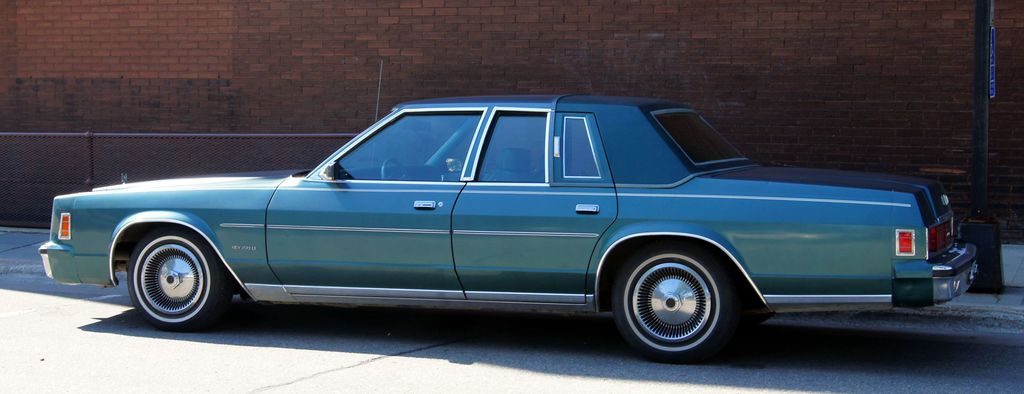
5. **Chrysler R-Body Cars (1979-1981)** Chrysler’s R-body cars – think the Newport and New Yorker of that era – didn’t just look like automotive fossils; they essentially *were* automotive fossils. These were rolling relics built on platform technology that honestly belonged in the Smithsonian, not attempting to compete against the sleek, efficient Japanese engineering marvels that were taking the world by storm. These behemoths stretched longer than a city bus, yet displayed all the aerodynamic sophistication of a brick warehouse, carrying a design lineage that could be traced back to some of the most, let’s be honest, hideous cars from the 1960s.
Imagine a car with massive chrome grilles and bumpers that screamed “old America,” while brands like Honda and Toyota were quietly offering sleek, purposeful designs that actually acknowledged the groundbreaking concept of fuel efficiency. Seeing an R-body navigate modern traffic, even back then, was like spotting a mastodon trying to race greyhounds – impressive in its own prehistoric way, perhaps, but utterly and completely wrong for the rapidly changing times. They were relics in motion, oblivious to the demands of a new automotive era.
Step inside an R-body, and you’d be greeted by acres of bargain-bin plastic, desperately masquerading as luxurious appointments. Under the hood, the V8 engines consumed gasoline with an alarming voracity, much like a fraternity house empties kegs on a Saturday night. These powertrains delivered horsepower numbers that would frankly embarrass a modern lawn mower, while simultaneously requiring fuel stops more frequent than bathroom breaks on a particularly long road trip. It was a truly inefficient setup for an era grappling with fuel crises.
And then there was the infamous Lean Burn ignition system, which transformed every single traffic light into a white-knuckle gambling experience. Stalling wasn’t just a possibility in these cars; it was practically an inevitability. To top it all off, Chrysler executives, incredibly, actually projected an astonishing 11 defects per vehicle before these cars even left the showroom. They were, in essence, openly admitting they were selling guaranteed disappointment, neatly packaged with four wheels and a warranty. Talk about a lack of confidence in your own product!
Car Model Information: 2008 Chrysler Town & Country LX
Name: Chrysler LeBaron
Caption: Third generation LeBaron convertible
Manufacturer: Chrysler Corporation
Layout: FR layout,Front-engine, front-wheel-drive layout
Class: Mid-size,Personal luxury
Successor: Chrysler New Yorker Fifth Avenue
Categories: 1980s cars, 1990s cars, All articles with specifically marked weasel-worded phrases, All articles with unsourced statements, Articles with short description
Summary: The Chrysler LeBaron is a line of automobiles built by Chrysler from 1931 to 1941 and from 1977 to 1995. Chrysler also used the LeBaron name for the Imperial LeBaron from 1957 to 1975.
The model was introduced in 1931, with a body manufactured by LeBaron, and competed with other luxury cars of the era, such as Lincoln and Packard. After purchasing LeBaron with its parent Briggs Manufacturing Company, Chrysler introduced the luxury make Imperial in 1955, and sold automobiles under the name Imperial LeBaron from 1957 until 1975. Chrysler discontinued the Imperial brand for 1976 and reintroduced the Chrysler LeBaron in 1977 to what was then Chrysler’s lowest-priced model.
Chrysler has used the LeBaron name across five cars:
1977–1981 M-body (mid-size) LeBaron sedan, coupe, and wagon
1982–1988 K-body (mid-size) LeBaron sedan, coupe, convertible, and wagon
1985–1989 H-body (mid-size) LeBaron GTS hatchback
1987–1995 J-body (personal luxury) LeBaron coupe and convertible
1990–1994 AA-body (mid-size) LeBaron sedan
The last Chrysler LeBaron was manufactured in 1995, to be replaced with the Cirrus and Sebring. The LeBaron was one of Chrysler’s longest-running brands.
Get more information about: Chrysler LeBaron
Buying a high-performing used car >>>
Brand: Chrysler Model: R-body
Price: $8,999 Mileage: 94,102 mi.

6. **Ford Escape and Ford Bronco Sport** Shifting gears from the historical nightmares, let’s fast-forward a bit to some more recent struggles that highlight a persistent issue for American automakers, even today. Take, for instance, the Ford Escape and its sibling, the Ford Bronco Sport. On the surface, they look modern and capable, blending into today’s SUV-heavy landscape. However, the real head-scratcher with these models lies squarely under the hood, specifically with their tiny 3-cylinder EcoBoost engine with a turbo.
Now, don’t get us wrong, small turbocharged engines *can* work in certain applications. But in these vehicles, many experts and owners feel that this setup is simply asking too much of an underpowered engine to adequately support the models’ size and intended use. It’s like trying to power a full-sized roller coaster with a lawnmower engine – technically possible, but probably not going to end well, or very reliably. This choice often leads to a feeling of strain and, for some, a significant question mark over long-term durability.
This particular engine choice, while perhaps a bid for better fuel economy on paper or lower manufacturing costs, seems to push the boundaries of what consumers expect in terms of performance and reliability from a Ford SUV. It’s a common complaint that an engine this small, trying to move a vehicle of this mass, leads to a less than ideal driving experience and potentially more wear and tear over time. It shows how the pursuit of efficiency or cost-saving can sometimes lead to a compromise that impacts the owner’s experience and the vehicle’s reputation for reliability.
This brings us neatly into the continuing saga of American cars that looked great on paper or in the showroom, but fell short once they became a part of daily life. The issues, as you can see, aren’t just confined to the dusty annals of automotive history. They continue to pop up in newer models, reminding us that the journey to consistent reliability and owner satisfaction is still very much ongoing for many American brands. And trust us, we’ve got even more modern-day heartbreakers coming your way in the next section!”
Car Model Information: 2020 Ford Escape S
Name: Ford Escape
Caption: 2021 Escape Hybrid (US)
Manufacturer: Ford Motor Company
Aka: Unbulleted list
Production: 2000–present
ModelYears: 2001–present
Class: Compact crossover SUV
BodyStyle: SUV
Layout: Unbulleted list
Predecessor: Nissan Terrano II
Successor: Ford Territory (China)
Categories: 2010s cars, 2020s cars, All-wheel-drive vehicles, All Wikipedia articles written in American English, All articles with dead external links
Summary: The Ford Escape is a compact crossover SUV manufactured and marketed by Ford Motor Company since the 2001 model year. The first Ford SUV derived from a car platform, the Escape fell below the Ford Explorer in size; the Escape was sized between the Ford EcoSport and Ford Edge. The 2005 model year Ford Escape Hybrid was the first hybrid-electric vehicle from Ford, and the first hybrid produced as an SUV.
The first two generations of the Escape used the Ford CD2 platform (jointly developed with Mazda), leading to the release of the rebadged variants, the Mazda Tribute and Mercury Mariner; as with the Escape, both the Tribute and Mariner were marketed in North America (the Mariner was never marketed in Canada). In Europe, the Escape was initially branded as the Ford Maverick from 2001 to 2008 (replacing a Nissan-produced SUV).
Under the mid-2000s “One Ford” globalization strategy, the third and fourth-generation designs of the Escape have been unified with the Ford Kuga, designed by Ford of Europe. Sharing a common body and chassis underpinnings (and several engines), the Escape and Kuga are manufactured in their home markets. As with previous generations, the fourth-generation Escape is offered with gasoline, hybrid, and plug-in hybrid options. Outside of North America, the Ford Escape is marketed in Australia, China, and Taiwan.
In August 2025, it was announced that Ford will be discontinuing the Escape after the 2026 model year.
Get more information about: Ford Escape
Buying a high-performing used car >>>
Brand: Ford Model: Escape
Price: $12,990 Mileage: 56,935 mi.
Read more about: Timeless Automotive Icons: 10 Cars From the 1940s That Still Command Attention Today
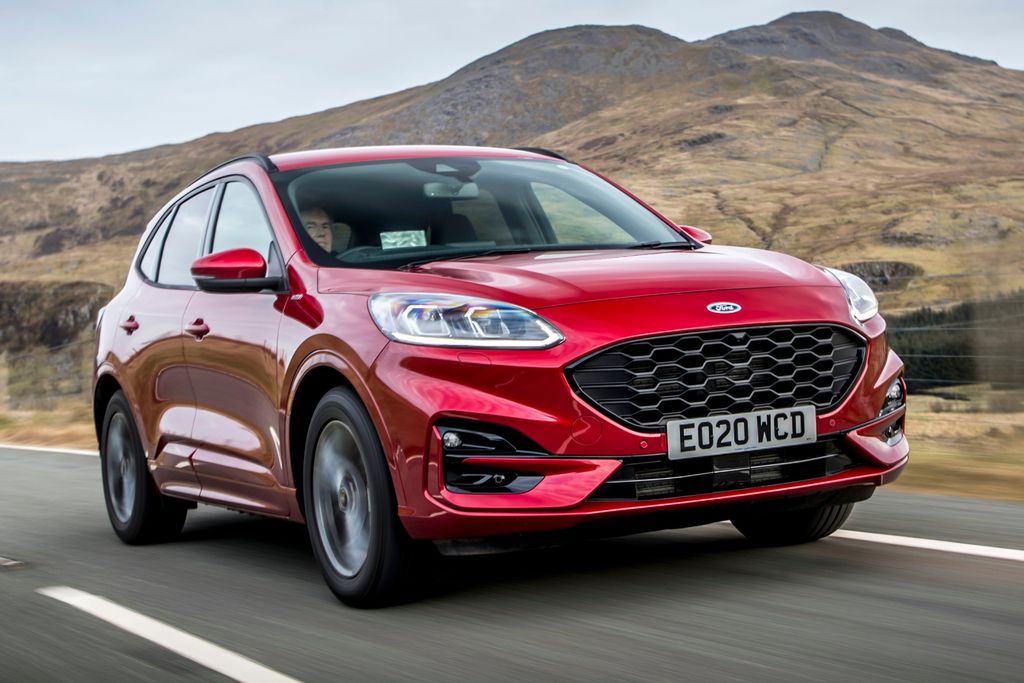
7. **Ford Explorer and Lincoln Aviator**Alright, let’s talk about a pair of siblings that seemingly tried to outdo each other in the “unexpected problems” department: the Ford Explorer and the Lincoln Aviator. These two aren’t just distant relatives; they’re mechanically identical vehicles, sharing the same core engineering. So, when one sneezes, the other practically catches the flu. You’d think with a brand like Ford, and then its luxury counterpart Lincoln, there would be a certain baseline of reliability, right? Well, prepare to have your expectations gently lowered, then perhaps completely dashed.
The “more than their share of problems” line isn’t just a catchy phrase for these models; it’s a direct quote from the pros, and it speaks volumes. We’re not talking about minor annoyances like a squeaky door hinge here. We’re diving into the deep end of automotive headaches. Owners have reported issues that sound like a mechanic’s bingo card of despair: turbo failure, transmission failure (yes, that’s a big one!), fracturing intake valves, and the ever-so-annoying coolant leaks. Imagine dropping a significant chunk of change on what you thought was a reliable family SUV or a sleek luxury cruiser, only to find yourself on a first-name basis with your service manager, debating the finer points of engine disassembly.
It’s particularly frustrating when you consider the promise. The Explorer has been a staple in American driveways for decades, synonymous with family adventures and practicality. The Aviator, on the other hand, is meant to embody Lincoln’s vision of sophisticated luxury. Yet, both have stumbled in the fundamental reliability race, proving that even a well-established nameplate or a premium badge isn’t immune to the kind of mechanical mayhem that can turn daily commutes into anxiety-inducing expeditions. It’s a sobering reminder that sometimes, the flashiest new features can mask a foundational fragility that truly puts the “adventure” in automotive ownership.
Car Model Information: 2023 Ford Explorer Limited
Name: Ford Explorer
Caption: Sixth-generation Ford Explorer
Manufacturer: Ford Motor Company
Production: 1990–present
ModelYears: 1991–present
Class: unbulleted list
Chassis: unbulleted list
Predecessor: Ford Bronco II
Successor: Ford Territory (Australia)
Categories: 2000s cars, 2010s cars, 2020s cars, All-wheel-drive vehicles, All Wikipedia articles in need of updating
Summary: The Ford Explorer is a range of SUVs manufactured by Ford Motor Company since the 1991 model year. The first five-door SUV produced by Ford, the Explorer, was introduced as a replacement for the three-door Bronco II. As with the Ford Ranger, the model line derives its name from a trim package previously offered on Ford F-Series pickup trucks. As of 2020, the Explorer became the best-selling SUV in the American market.
Currently in its sixth generation, the Explorer has featured a five-door wagon body style since its 1991 introduction. During the first two generations, the model line included a three-door wagon (directly replacing the Bronco II). The Ford Explorer Sport Trac is a crew-cab mid-size pickup derived from the second-generation Explorer. The fifth and sixth generations of the Explorer have been produced as the Ford Police Interceptor Utility (replacing both the Ford Crown Victoria Police Interceptor and the Ford Police Interceptor Sedan).
The Explorer is slotted between the Ford Edge and Ford Expedition within North America’s current Ford SUV range. The model line has undergone rebadging several times, with Mazda, Mercury, and Lincoln each selling derivative variants. Currently, Lincoln markets a luxury version of the Explorer as the Lincoln Aviator.
For the North American market, the first four generations of the Explorer were produced by Ford at its Louisville Assembly Plant (Louisville, Kentucky) and its now-closed St. Louis Assembly Plant (Hazelwood, Missouri). Ford currently assembles the Explorer alongside the Lincoln Aviator and the Police Interceptor Utility at its Chicago Assembly Plant (Chicago, Illinois).
Get more information about: Ford Explorer
Buying a high-performing used car >>>
Brand: Ford Model: Explorer
Price: $29,999 Mileage: 38,525 mi.
Read more about: Massive Ford Recall Alert: Engine Failure Risk for Bronco, F-150, Explorer, and Lincoln models
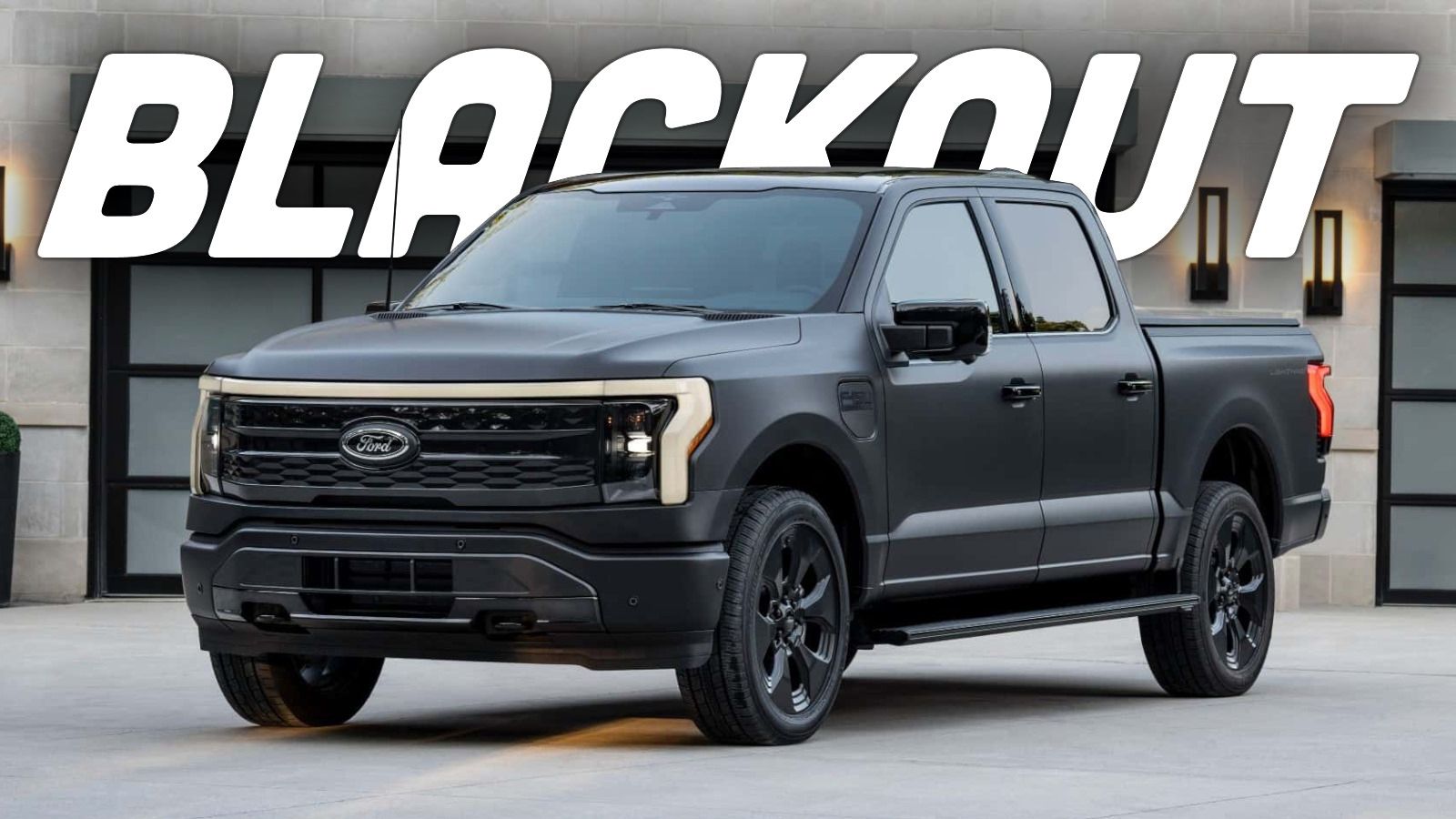
8. **Ford F-150 with PowerBoost generator**Next up, let’s turn our attention to an American icon: the Ford F-150. This truck isn’t just a vehicle; it’s practically a national monument, embodying ruggedness, capability, and the spirit of American hard work. For generations, the F-150 has been the undisputed king of the pickup truck world, selling millions and becoming an integral part of countless businesses and families. But even legends can have their off days, or in this case, entire model years that just miss the mark. Enter the Ford F-150 with its innovative PowerBoost generator.
This particular variant of the F-150, while undeniably clever on paper with its integrated generator system, has sadly earned the unenviable title of being “one of the least reliable F-150s on the market.” That’s a pretty heavy statement for a truck that’s supposed to be the epitome of reliability and tough-as-nails performance. It’s the automotive equivalent of your most dependable friend suddenly developing a mysterious allergy to Mondays. The PowerBoost was pitched as a game-changer, offering mobile power for work sites or tailgates, blurring the lines between vehicle and portable power station.
However, the promise of cutting-edge utility appears to have come with an unexpected trade-off in consistent reliability. While the specific issues aren’t detailed in our immediate notes for this model beyond its general “least reliable” status, the implication is clear: integrating complex new hybrid and power generation technology into a high-volume workhorse like the F-150 has seemingly introduced new vulnerabilities. It highlights the delicate balance between pushing the boundaries of innovation and ensuring that the fundamental purpose of a truck—being dependable and ready for anything—remains uncompromised. For a truck celebrated for its steadfastness, this particular F-150 has left a few owners feeling, well, less than boosted.
Car Model Information: 2023 Ford F-150 Lariat
Name: Ford F-Series
Caption: 2022 Ford F-150 Lariat Luxury
Manufacturer: Ford Motor Company
Aka: Ford Lobo (Mexico, 1992–present)
Production: 1948–present
Class: Pickup truck#Full-size pickup truck
Layout: Front-engine, rear-wheel-drive layout,rear-wheel drive
Predecessor: 1941 Ford
Categories: All-wheel-drive vehicles, All Wikipedia articles written in American English, All articles that may contain original research, All articles with unsourced statements, Articles that may contain original research from September 2020
Summary: The Ford F-Series is a series of light-duty trucks marketed and manufactured by Ford Motor Company since model year 1948 as a range of full-sized pickup trucks — positioned between Ford’s Ranger and Super Duty pickup trucks. Alongside the F-150 (introduced in 1975), the F-Series also includes the Super Duty series (introduced in 1999), which includes the heavier-duty F-250 through F-450 pickups, F-450/F-550 chassis cabs, and F-600/F-650/F-750 Class 6–8 commercial trucks.
Get more information about: Ford F-Series
Buying a high-performing used car >>>
Brand: Ford Model: F-150
Price: $48,324 Mileage: 23,551 mi.
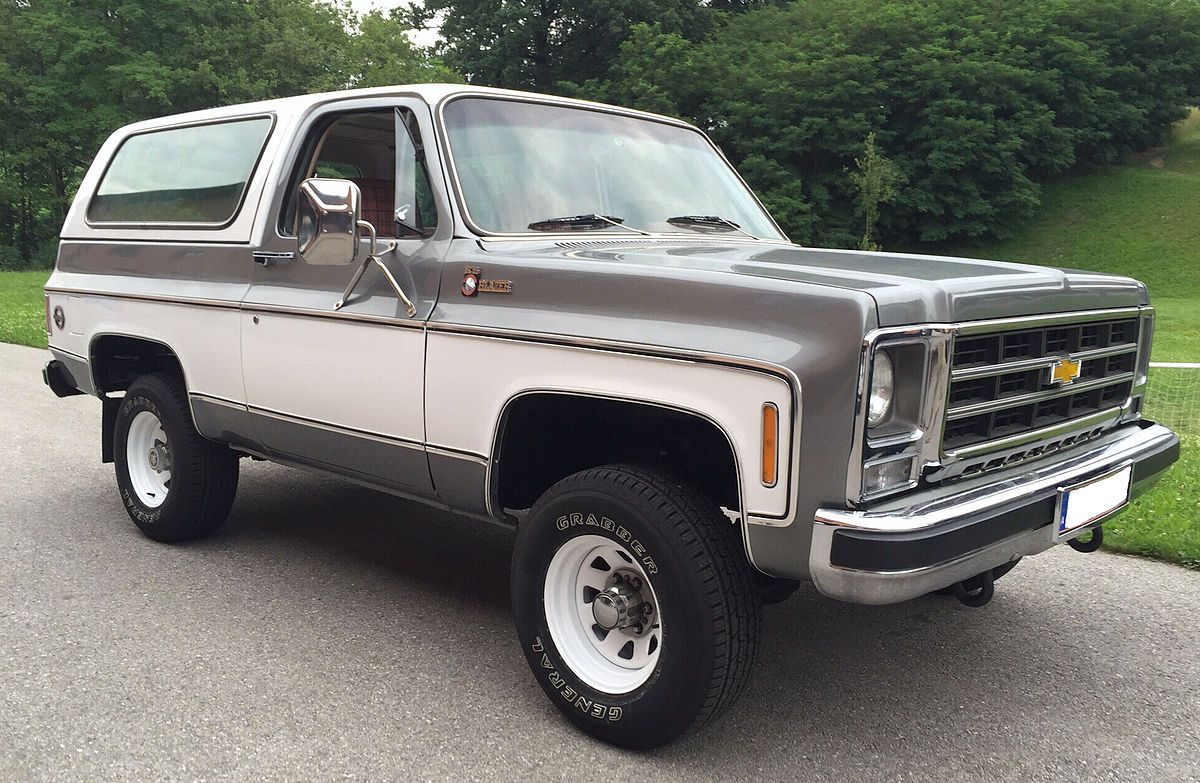
9. **Chevrolet Blazer EV**Steering into the electric future, we land on the Chevrolet Blazer EV, a model that promised to inject some much-needed excitement and cutting-edge tech into GM’s electric lineup. Launched with much anticipation in 2023, this sleek electric SUV was poised to be a major player in the rapidly expanding EV market, a clear signal that GM was serious about its electric aspirations. Its modern design and the Blazer nameplate conjured images of thrilling, emission-free drives. But as it turns out, the road to electric glory can be surprisingly bumpy, and sometimes, a complete dead end.
In a move that sent ripples through the automotive industry, General Motors actually had to stop selling the Blazer EV in response to “mounting reliability problems.” Let that sink in for a moment: a brand-new vehicle, barely off the assembly line, had to be pulled from showrooms because it simply wasn’t behaving. This wasn’t just a minor glitch or a software update; we’re talking about serious headaches like electronic failure, which can turn a high-tech vehicle into an expensive paperweight. Then there were the charging issues, turning the convenience of electric power into a frustrating scavenger hunt for a working plug.
And as if that wasn’t enough, “software glitches” joined the party, making the user experience feel more like an early beta test than a polished production model. For a vehicle that’s supposed to represent the future, these are critical, fundamental failures that erode consumer trust faster than a bad Yelp review. The Blazer EV’s troubled launch serves as a stark reminder that while American automakers are eager to jump into the EV race, executing flawlessly on new, complex technologies remains a significant hurdle. It’s a classic case of aiming for the stars but tripping on the launchpad, leaving potential owners wondering if their new EV will be a dream machine or just a really expensive brick.
Car Model Information: 2022 Mazda CX-5 2.5 S Premium
Name: Chevrolet Blazer EV
Caption: 2024 Chevrolet Blazer EV 2LT (Canada)
Manufacturer: General Motors
Production: November 2023 – present
ModelYears: 2024–present
Assembly: Ramos Arizpe, Coahuila
Class: Mid-size crossover SUV
BodyStyle: SUV
Layout: unbulleted list
Platform: GM BEV3
Related: unbulleted list
Motor: Permanent magnet motor
Battery: Ultium,lithium-ion
ElectricRange: United States Environmental Protection Agency,85 kWh AWD: {{cvt,279,mi
Charging: unbulleted list
Wheelbase: cvt
Length: cvt
Width: cvt
Height: cvt
Weight: cvt
Categories: 2020s cars, All-wheel-drive vehicles, All Wikipedia articles written in American English, All articles with bare URLs for citations, Articles with bare URLs for citations from August 2024
Summary: The Chevrolet Blazer EV is a battery electric mid-size crossover SUV manufactured by General Motors under the Chevrolet brand. Introduced in 2022, the model went on sale in mid-2023 in North America. The model offers up 320 miles (510 km) of range. It is produced at GM’s plant in Ramos Arizpe, Mexico. The Blazer EV also won the MotorTrend SUV of the Year Award (SUVOTY) for 2024.
Get more information about: Chevrolet Blazer EV
Buying a high-performing used car >>>
Brand: Chevrolet Model: Blazer EV
Price: $25,680 Mileage: 32,780 mi.
Read more about: From Roaring V8s to Silent Thunder: The Electrifying Evolution of American Muscle Cars
10. **Buick Encore and Chevy Trailblazer**Alright, let’s talk about a duo that tries to play it cool in the compact SUV segment but might just be trying to pull a fast one on your wallet: the Buick Encore and the Chevy Trailblazer. On the surface, they look like perfectly sensible, modern crossovers designed for city living or light adventuring. They’ve got that contemporary SUV vibe that everyone seems to be craving these days, fitting neatly into many driveways and appealing to a broad audience looking for something practical yet stylish. But peel back that shiny exterior, and you might find yourself questioning the price tag.
The main issue highlighted for these models is quite blunt: they are “overpriced for a 3-cylinder turbocharged vehicle.” Now, we’ve touched on small turbocharged engines before, and while they can be efficient, the context here is about value. When you’re paying a certain amount for a vehicle, you expect a certain level of performance, refinement, and perceived value. The three-cylinder engine, while contributing to fuel efficiency, often comes with compromises in power delivery and overall driving feel that might not justify the cost for many buyers. It’s like paying premium prices for a small coffee when you could get a latte twice the size down the street for less.
The advice here is clear and cutting: “you are better off spending less money on better vehicles.” This isn’t just about these two specific models; it’s a broader commentary on the market. In a highly competitive segment overflowing with options, for these to be considered “overpriced” suggests that their combination of features, build, and powertrain simply doesn’t stack up against what competitors are offering for similar or even less money. It underscores a persistent challenge for some American brands: delivering compelling value that goes beyond just looks, and instead, truly justifies the hard-earned cash consumers are shelling out. Sometimes, a “good deal” isn’t about the lowest sticker price, but the most bang for your buck, and these two might just be missing the mark on that front.
Car Model Information: 2020 Buick Encore Preferred
Name: Buick Encore
Manufacturer: General Motors
Production: 2012–2022
ModelYears: 2013–2022
Class: Subcompact crossover SUV
BodyStyle: SUV
Successor: Buick Envista
Categories: 2010s cars, All-wheel-drive vehicles, All Wikipedia articles written in American English, Articles with short description, Buick vehicles
Summary: The Buick Encore is a subcompact crossover SUV built by General Motors from 2012 to 2022. It is subcompact crossover SUV marketed by Buick and its fourth SUV overall after the Rendezvous, Rainier, and Enclave.
The “Encore” designation was previously used by American Motors Corporation (AMC) for the subcompact two and four-door hatchback variants of the U.S.-built front-wheel drive Renault Alliance from 1984 to 1987.
Get more information about: Buick Encore
Buying a high-performing used car >>>
Brand: Buick Model: Encore
Price: $11,141 Mileage: 98,837 mi.
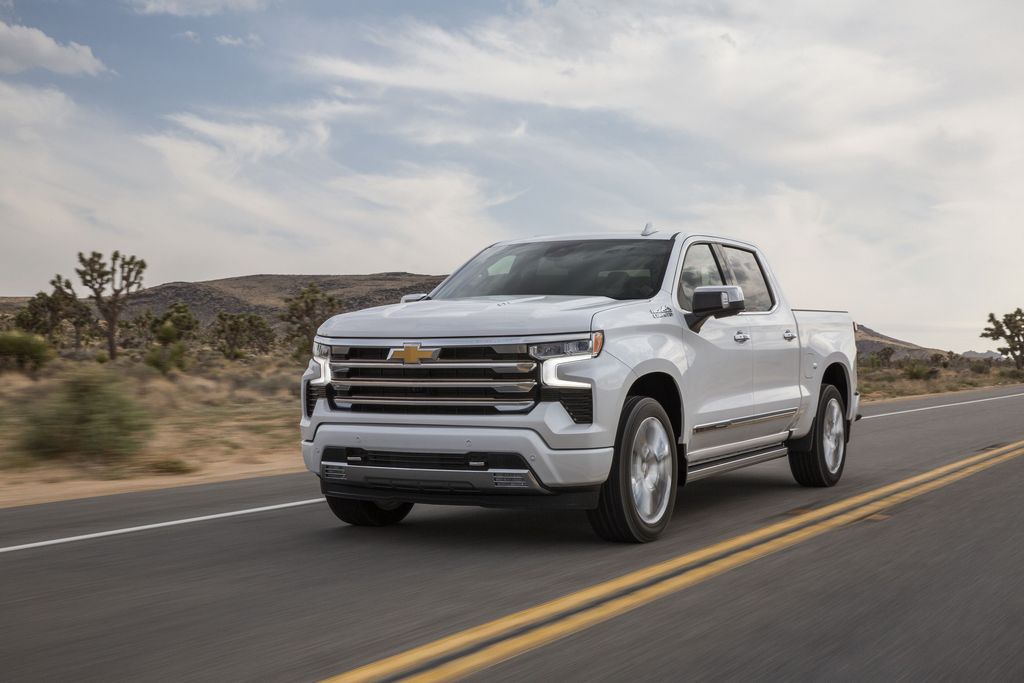
11. **Chevy Silverado and GMC Sierra**Now, let’s talk about two more titans of the American road: the Chevy Silverado and the GMC Sierra. These trucks are workhorses, cornerstones of construction sites, family haulers, and weekend adventure vehicles across the nation. Their V8 engines have long been synonymous with raw power and dependable performance, the kind of grunt you need to tow a boat or haul a serious load. They’re popular, they’re plentiful, and for many, they represent the quintessential American pickup. But even these stalwarts have fallen victim to some modern-day engineering woes that can turn a proud owner into a very frustrated one.
The problem centers around a relatively new piece of technology: “new cylinder deactivation tech in their V-8 engines.” This tech is designed to improve fuel economy by temporarily shutting down some cylinders when full power isn’t needed. Sounds smart, right? Unfortunately, this innovation has backfired, leading to “multiple recurring issues such as lifter problems before serious miles are logged on, often resulting in engine loss.” “Engine loss” – that’s a phrase no car owner ever wants to hear. It’s not a minor repair; it’s a catastrophic failure that can leave you stranded and facing a massive repair bill, transforming a dependable truck into a very large, very expensive paperweight.
And just in case that wasn’t enough to make you wince, “transmission problems are common as well in these models.” So, you’re not just risking your engine; the very system responsible for putting that power to the wheels is also prone to issues. This situation with the Silverado and Sierra highlights a critical point in modern automotive engineering: the pursuit of efficiency, while noble, can sometimes introduce complex systems that inadvertently compromise fundamental reliability. For vehicles relied upon for heavy-duty work and daily dependability, these recurring and severe mechanical failures are a serious blot on their otherwise stellar reputation, reminding us that sometimes, less “innovation” might actually mean more peace of mind.
Read more about: The Cars That Became Stars: 12 Iconic Vehicles from 70s & 80s TV & Film
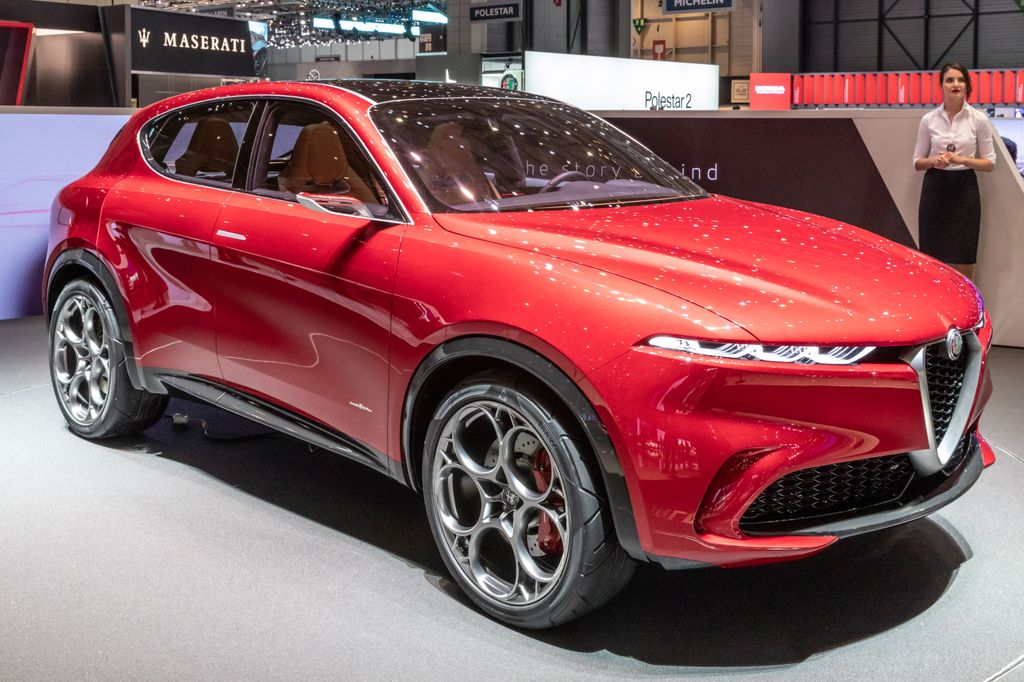
12. **Almost All Stellantis Models**Finally, we arrive at a rather broad but significant category that encapsulates a range of disappointments across multiple brands: “Almost All Stellantis Models.” This conglomerate includes iconic names like Chrysler, Dodge, Ram, and Jeep. If you’ve been wondering why some American cars just feel a bit… off, or consistently drain your bank account with repairs, this might be your answer. It’s not just one bad apple; it appears to be a whole basket of them, consistently underperforming despite their initial promises and often hefty price tags.
The consensus is damning: “Too many of the models are consistently overpriced, underwhelming, and money-draining duds.” Let’s break that down. “Overpriced” means you’re paying a premium for a vehicle that simply doesn’t deliver the expected quality or features. “Underwhelming” suggests a lack of performance, refinement, or innovation compared to competitors. And “money-draining duds”? That’s where the real pain kicks in. Specific examples include the Chrysler Pacifica, the Dodge Hornet R/T, and the Ram truck. The Ram, in particular, has earned the unenviable reputation for “being the most expensive to maintain and repair of all mainstream truck brands.” That’s a heavy hit for truck owners who rely on their vehicles for work and personal use.
And no discussion of problematic American vehicles would be complete without mentioning the troubled and “way-overpriced Jeep.” Imagine paying “$80,000 to $120,000 for their top models” only to discover they are “not the top on reliability” and are “expected to depreciate significantly the first year of ownership.” That’s like buying a luxury watch that stops ticking after a month and loses half its value instantly. This widespread issue across Stellantis brands speaks to a systemic challenge in delivering consistent quality, value, and long-term reliability. It’s a bitter pill for consumers who invest in these vehicles, hoping for an embodiment of American automotive pride, only to find themselves grappling with a financial and mechanical headache. It truly embodies that “cultural Americanism” we mentioned earlier, where we’ve sadly come to accept that some of our beloved domestic brands just aren’t always up to snuff.
So, there you have it, folks. We’ve taken a rather bumpy ride through the annals of American automotive history, from the rust-prone nightmares of yesteryear to the software-glitched EVs and maintenance-hungry trucks of today. It’s a journey that showcases the undeniable swagger and innovation of American car culture, but also the persistent Achilles’ heel of inconsistent reliability and sometimes baffling design choices. While our hearts might still flutter at the sight of a classic muscle car or the promise of a powerful new truck, the reality of ownership can sometimes feel less like a joyride and more like an ongoing relationship with your mechanic.
Read more about: Unearthing Automotive Legends: 14 of the Rarest American Muscle Cars That Command the Roads
It’s clear that while the ambition to create compelling, powerful, and technologically advanced vehicles is always there, the execution often leaves something to be desired. From engines that spontaneously combust to transmissions that decide to take an early retirement, and from vehicles that literally rust before your eyes to those that cost a small fortune to keep running, the dream of owning that “cool” American car can, for many, swiftly turn into a money-draining, headache-inducing reality. Here’s hoping that the path forward involves fewer trips to the dealership for repairs and more open roads for pure, unadulterated driving pleasure!

